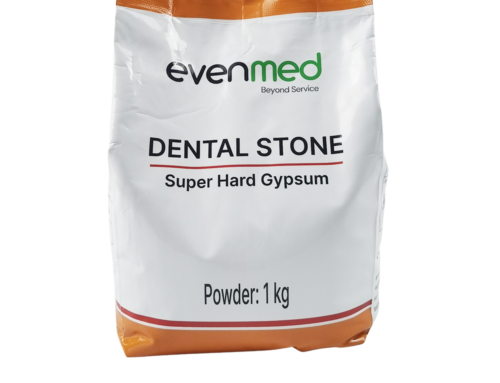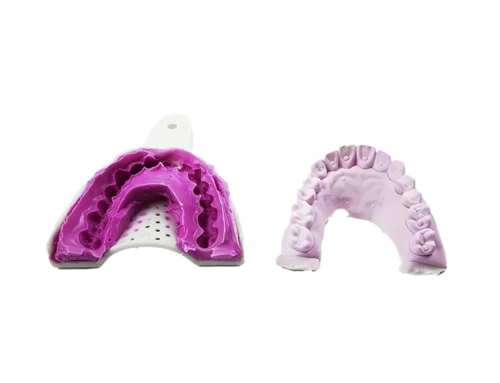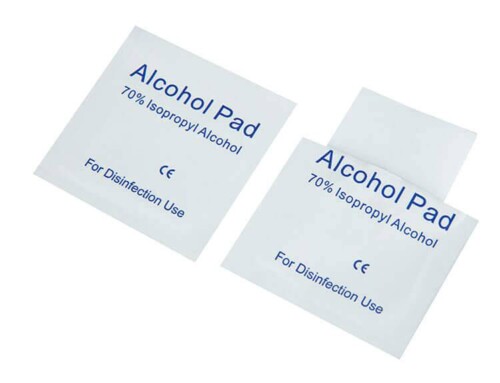As a dental practitioner, making accurate impressions is critical for the success of various dental procedures. The impression material used can make a significant difference in the final outcome of the procedure. Alginate impression material is one of the most commonly used materials in dental practices worldwide. In this article, we will explore the reasons why alginate impression material is the only thing you need for perfect impressions.
Introducción
Dental impressions are critical for the success of various dental procedures, such as crowns, bridges, dentures, and orthodontic treatment. An impression is a negative reproduction of the oral structures that will be used to create a positive model of the teeth and gums. The impression material used plays a significant role in the accuracy of the impression. Alginate impression material is one of the most commonly used materials in dental practices worldwide.
What is Alginate Impression Material?
Alginate impression material is a hydrocolloid material that is derived from seaweed. It is a popular choice for making impressions of teeth and gums because of its ease of use and low cost. Alginate impression material sets by a chemical reaction that occurs when the powder is mixed with water. Alginate impression material is available in different viscosities, such as regular set and fast set, to accommodate different clinical situations.
Why is Alginate Impression Material Popular?
Alginate impression material is popular among dental practitioners because of its numerous advantages. It is easy to mix, sets quickly, and is easy to remove from the mouth. Alginate impression material is also cost-effective, making it an ideal choice for dental practices that perform a high volume of impressions. Additionally, it is compatible with a wide range of dental materials and is suitable for making both preliminary and final impressions.
Advantages of Alginate Impression Material
The advantages of alginate impression material are numerous. Here are some of the most significant advantages:
Facilidad de uso
Alginate impression material is easy to use, even for novice dental practitioners. The material is easy to mix, and the set time is relatively short, making it an ideal choice for procedures that require quick turnaround times.
Rentable
Alginate impression material is one of the most cost-effective impression materials available. Its low cost makes it an ideal choice for dental practices that perform a high volume of impressions.
Compatibility with Dental Materials
Alginate impression material is compatible with a wide range of dental materials, including gypsum products, waxes, and acrylic resins. This compatibility makes it an ideal choice for making both preliminary and final impressions.
Patient Comfort
Alginate impression material is generally well-tolerated by patients. It has a pleasant taste and does not cause any significant discomfort during the impression procedure.
Types of Alginate Impression Material
Alginate impression material is available in different types, depending on the clinical situation. The most common types of alginate impression material include:
Regular Set Alginate
Regular set alginate has a set time of around 2-3 minutes and is suitable for most clinical situations.
Fast Set Alginate
Fast set alginate has a set time of around 1 minute and is ideal for situations where a quick impression is needed.
Chromatic Alginate
Chromatic alginate is a type of alginate impression material that changes color as it sets. This feature can help dental practitioners determine when the material has fully set, reducing the risk of premature removal.
Flavor-Added Alginate
Flavor-added alginate is a type of alginate impression material that has a pleasant taste. This can help improve patient comfort during the impression procedure, especially for children and those with a strong gag reflex.
Factors to Consider When Using Alginate Impression Material
While alginate impression material is easy to use, several factors can affect the accuracy of the impression. Here are some of the factors to consider when using alginate impression material:
Temperatura
Alginate impression material is temperature-sensitive, and both the water and powder should be at room temperature before mixing. Using cold water can delay the set time, while using warm water can accelerate the set time and affect the accuracy of the impression.
Mixing Time
The mixing time for alginate impression material should be followed strictly. Overmixing can cause the material to set faster, while undermixing can result in a weaker and more brittle impression.
Tray Selection
The selection of the tray is crucial in obtaining an accurate impression. The tray should be appropriate for the size of the arch being impressed and should have adequate extensions to capture the full arch.
Retraction Cord
The use of retraction cord can help improve the accuracy of the impression by retracting the gingival tissue, allowing the material to flow into the crevices and margins.
How to Use Alginate Impression Material
Here is a step-by-step guide on how to use alginate impression material:
- Prepare the impression tray by cleaning and drying it thoroughly.
- Select the appropriate viscosity and type of alginate impression material.
- Measure the water and alginate powder according to the manufacturer’s instructions.
- Mix the water and powder using a spatula for the recommended mixing time.
- Load the impression tray with the mixed alginate impression material, ensuring that it covers the entire arch and extends beyond the margins.
- Seat the tray in the patient’s mouth, ensuring that the patient’s teeth are fully immersed in the impression material.
- Wait for the material to set fully before removing the tray.
- Inspect the impression for accuracy and completeness before sending it to the dental laboratory.
Common Mistakes When Using Alginate Impression Material
While alginate impression material is easy to use, several common mistakes can affect the accuracy of the impression. Here are some of the most common mistakes when using alginate impression material:
Improper Mixing
Improper mixing of the alginate impression material can result in a weak and brittle impression that is prone to distortion.
Premature Removal
Premature removal of the impression tray can result in an incomplete impression that lacks detail and accuracy.
Inadequate Retraction
Inadequate retraction of the gingival tissue can result in an inaccurate impression that lacks detail and accuracy.
Tips for Achieving Perfect Impressions with Alginate Impression Material
Here are some tips for achieving perfect impressions with alginate impression material:
Follow the Manufacturer’s Instructions
Following the manufacturer’s instructions can help ensure that the alginate impression material is used correctly.
Use the Correct Mixing Ratio
Using the correct mixing ratio of water and powder can help ensure that the impression material sets properly.
Ensure Adequate Retraction
Using a retraction cord can help ensure that the gingival tissue is retracted adequately, allowing the impression material to flow into the crevices and margins.
Use the Correct Tray Size
Using the correct tray size can help ensure that the entire arch is captured in the impression, and the impression material extends beyond the margins.
Monitor the Set Time
Monitoring the set time of the impression material can help ensure that the impression is not removed prematurely or allowed to set for too long.
Practice Proper Technique
Practicing proper technique, such as ensuring that the tray is fully seated and that the patient’s teeth are fully immersed in the impression material, can help ensure that the impression is accurate and complete.
Conclusión
Alginate impression material is a popular and reliable option for dental practitioners when taking impressions of a patient’s teeth and mouth. Its ease of use, affordability, and versatility make it a go-to option for dental impressions. By following the manufacturer’s instructions, using the correct mixing ratio, and practicing proper technique, dental practitioners can achieve perfect impressions with alginate impression material.
Preguntas frecuentes
- Is alginate impression material safe for patients? Yes, alginate impression material is safe for patients and has been used for many years in dental practice.
- How long does it take for alginate impression material to set? The set time for alginate impression material varies depending on the type and brand, but typically takes between one and four minutes.
- Can alginate impression material be reused? No, alginate impression material cannot be reused as it sets into a solid form.
- Can alginate impression material be used for all types of dental impressions? Alginate impression material is suitable for most types of dental impressions, but may not be appropriate for certain cases, such as those requiring high detail or accuracy.
- How should alginate impression material be stored? Alginate impression material should be stored in a cool, dry place, away from moisture and direct sunlight, and should be used within its expiration date.






